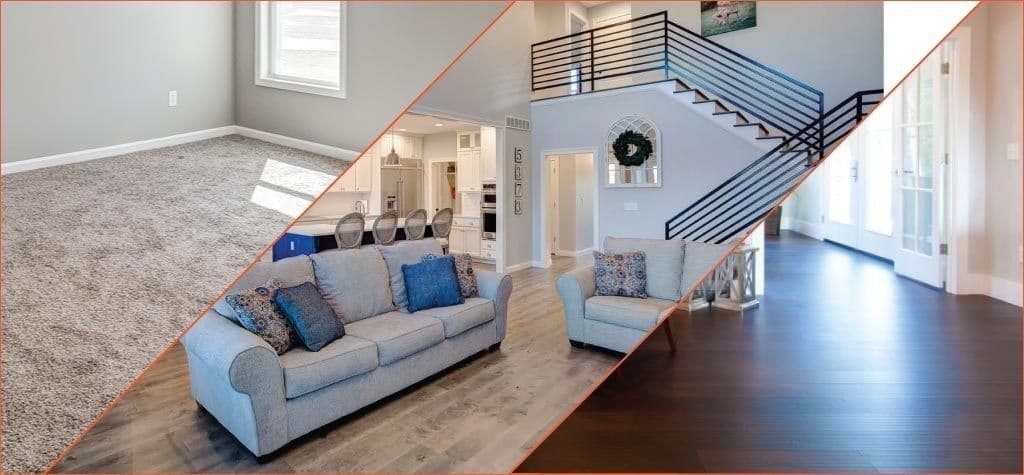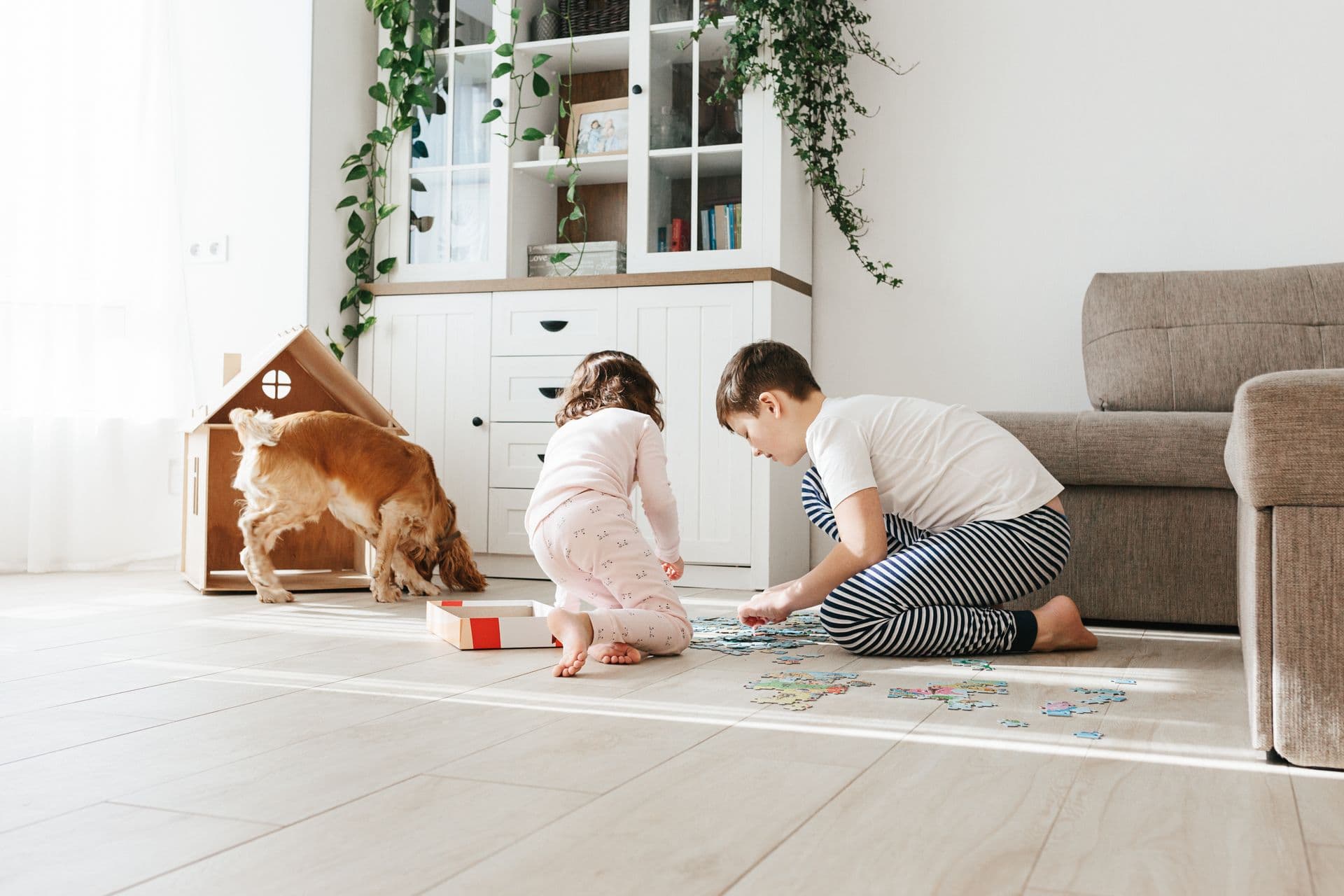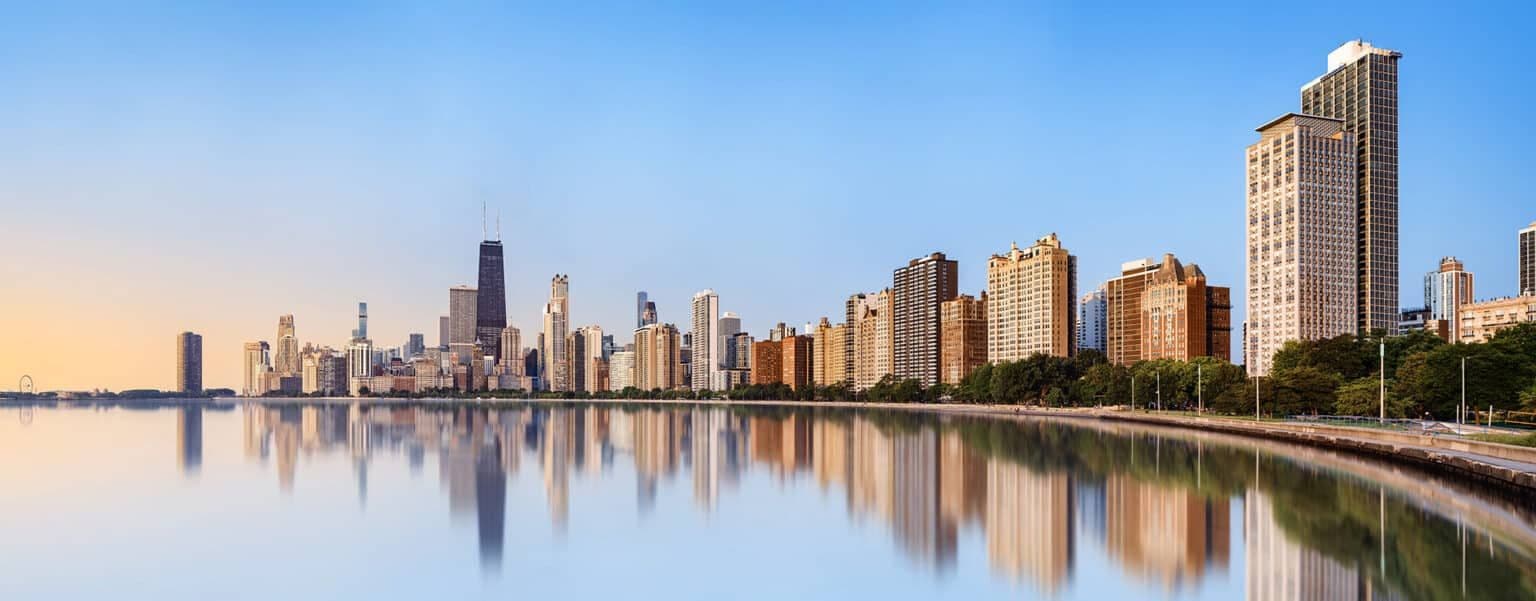How Different Flooring Wears Out Over Time

Life happens, and where is it going to happen more than at home (especially as we go on a year of remote work and social-distanced living)? Spills, dropped items, pets, young kids and their toys – you can be as careful as possible to try and minimize damage to your floors, but the fact is that normal wear and tear is bound to happen. While deterioration in your home is undesirable, nicks, scratches, and fading are to be expected, more so in high traffic rooms (think kitchen, living room, and bathroom(s)).
Floors can show their age, and when they do, it can become an eyesore. Knowing what to expect from your floors can help you make informed decisions when investing in a home makeover.
Tile floors
While tile floors are considered exceptionally durable, they can still crack under long-term pressure and use (pun intended). Your floor’s quality and age will most likely be the determining factors in how your floor ages, however, even the best quality tiles might be scratched or cracked as time passes.
Laminate Floors
We’ve mentioned before how laminate flooring is ideal for those looking to combine durability with affordability. As a result, it’s a popular substitute for finished hardwood. However, laminate needs a little more TLC than other flooring options. While the surface can become scuffed or scratched over time, water damage is something to be on the lookout for. It can cause small patches of mold to form or the laminate to warp or buckle. As a result, avoid using a wet mop to clean the floor as it can cause irreversible damage.
Vinyl Floors
One of the main reasons for vinyl floors’ popularity is that it provides insulation and padding underfoot. However, over time, vinyl can begin to wear thin in high-traffic areas. Discoloration is also common, either from chemicals or long-term sun exposure. Careful cleaning routines is one way to maintain longer color and shine while avoiding direct sunlight might be harder to do. Either way, it’s always important to control what you can to ensure a longer life span for your vinyl floors.
Carpet Floors
The list for why carpets should be avoided can run long, but the reality is that many people still prefer the plush comfort, warmth, and sound muffling perks that come with carpeting. And hey, that’s fair! There’s a reason why it’s been around homes since the beginning of civilization. But, having your floors covered in carpet doesn’t mean you’re excluded from the wear-and-tear-floor club.
Over time, matting or impressions – either from furniture or heavy foot traffic – are two of the telltale signs of a carpet’s age. Carpet is also prone to losing its texture and the padding underneath can wrinkle. Smells, discoloration, and faded trails of spills and clumsiness are bound to appear and be incredibly difficult to remove.
Hardwood floors
Often the most expensive flooring option, hardwood is also one of the most delicate finishes to maintain. Much like carpet, it can stain easily, and heavy moisture can cause warping, splitting, or buckling. If responsible – and accurate – cleaning isn’t practiced, hardwood floors can still absorb moisture quickly and result in large stains that appear over time.
Knowing what you want out of your floors is just as important as being cognizant of your budget. Hiring professionals who can guide you in the right direction can make the reflooring process smoother, quicker, and cheaper. If you’re ready to explore options for your hope, contact us today.
Recent Posts
When it comes to upgrading your home, nothing transforms a space quite like new floors. And now, Refloor, the leader in fast, easy, and guaranteed-for-life flooring is bringing its award-winning process to the Chicago area...
Think All Luxury Vinyl Is the Same? Think Again. Luxury vinyl flooring is super popular in today’s homes—and it’s easy to see why! It looks ...
Which One’s Smarter? Thinking about getting new floors? Want something that looks like real wood but doesn’t need a ton of care? Luxury Vinyl...
Read What Refloor's Customers Are Saying
Product, services, and warranty sell themselves, but Ryan was an excellent interpreter of all information. He was professional, personable and patient with us throughout the process. Will definitely refer to friends and family.
I'm very satisfied with the work done by Josh and his helper . I am very happy with Sam by keeping me up to date on the scheduling before and after the work began. VERY HAPPY CUSTOMER
Super nice and very informative. Took time to explain every detail and answer all the questions we had.




Contact Us

Mon - Thu: 8AM-7PM
Fri - Sat: 8AM-6PM
Sun: 10AM-5PM



